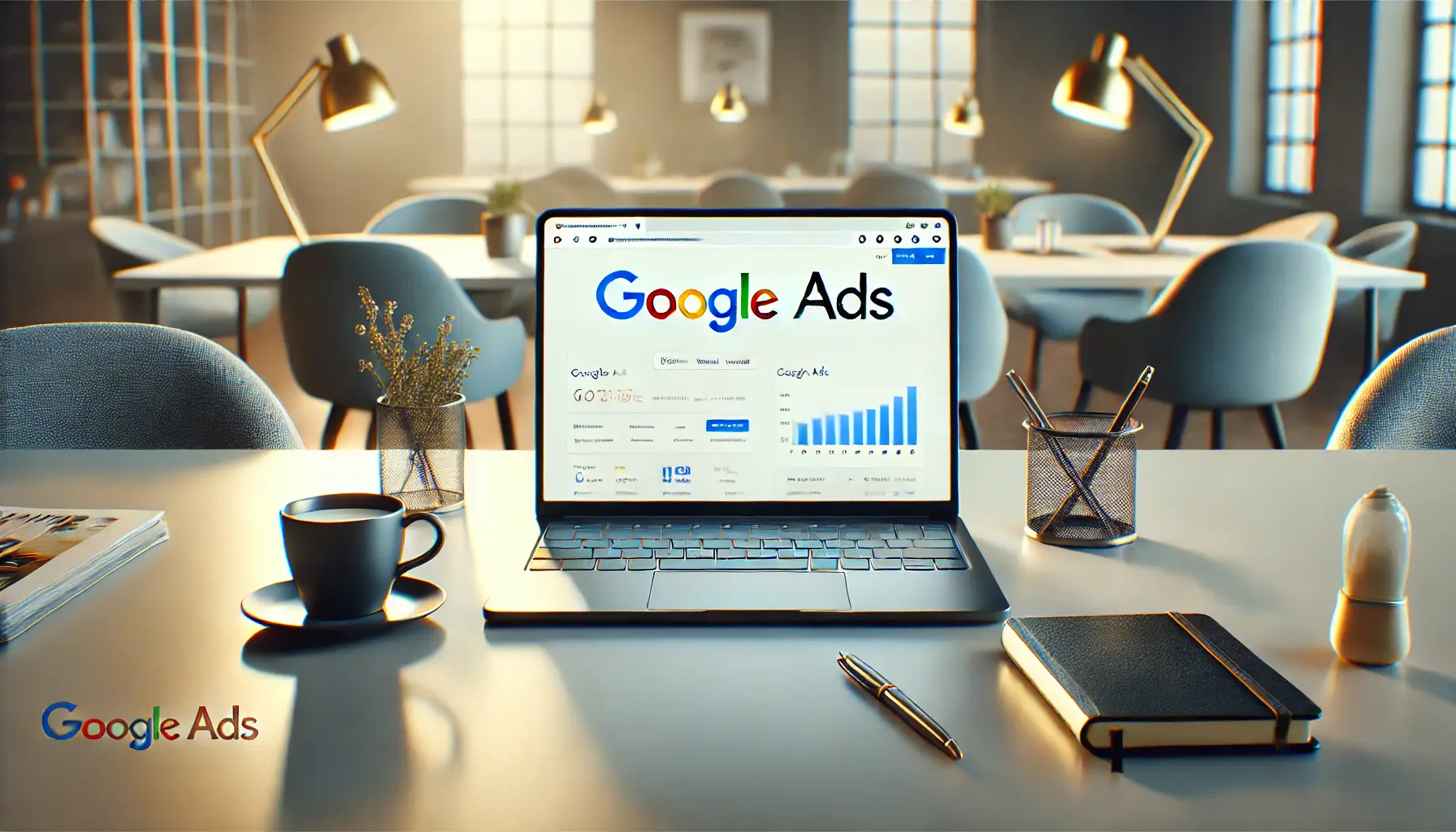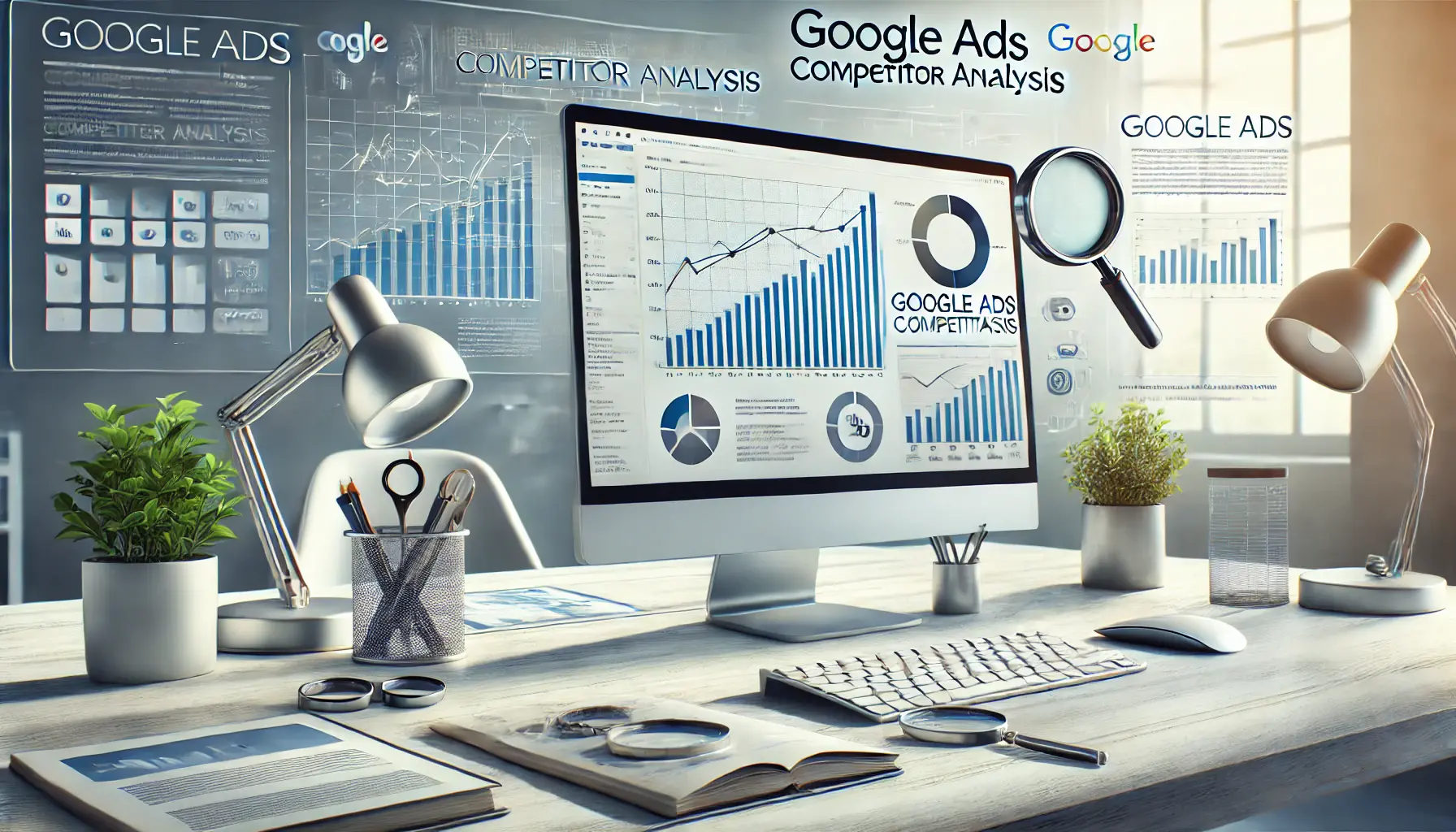Looking to raise your presence online and target the right sets of audiences?
Google Ads is one of the most powerful advertising platforms that empowers businesses of all scales to connect effectively with target customers.
Whether you are a small business owner or part of a large enterprise, understanding how Google Ads works could be the key to unlocking new opportunities for your brand.
In this article, we’ll explore what Google Ads is and guide you through the essentials to get started.
Understanding Google Ads and Its Importance
Google Ads is an online advertising platform developed by Google.
It allows advertisers to create campaigns that display ads on Google Search, YouTube, and other partner sites.
This platform operates on a pay-per-clickAn online advertising model where advertisers pay only when users click on their ads. (PPC) model, meaning you only pay when someone clicks on your ad.
But what makes Google Ads so impactful in the world of digital marketing?
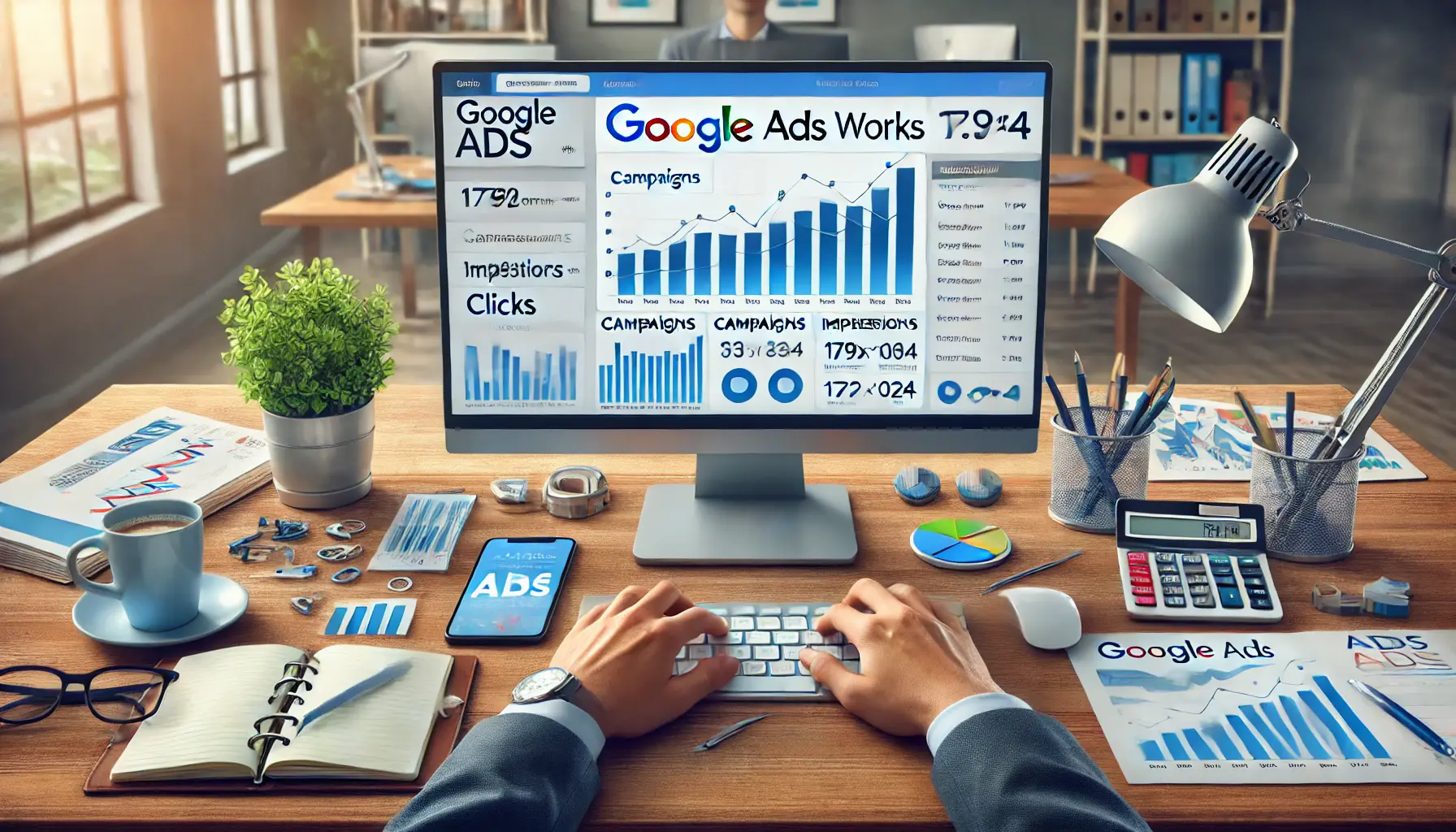
A professional exploring the Google Ads dashboard, showcasing how the platform functions in a real-world setting.
What is Google Ads and How Does It Work?
Google Ads enables businesses to showcase their products and services to users actively searching for related keywords.
By targeting specific queries, your ads appear at the top of search results, increasing visibility and driving traffic to your website.
The platform uses an auction systemA bidding process used to determine the placement and cost of ads in Google Ads. where advertisers bid on keywords.
Ads with the highest bid and quality score win top placements, ensuring relevance and user satisfaction.
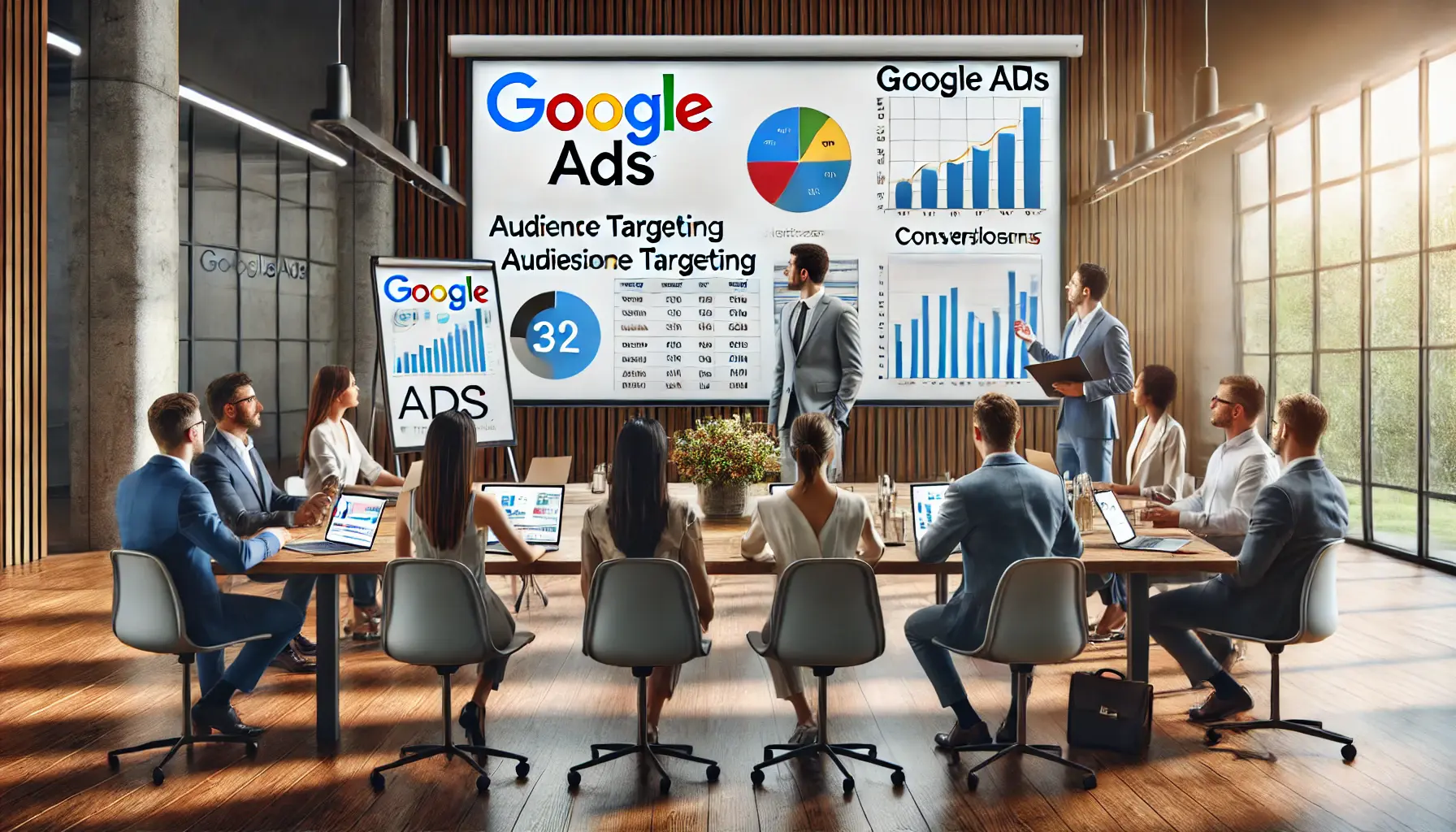
Marketing professionals strategizing with Google Ads metrics, highlighting its role in digital marketing.
The Role of Google Ads in Digital Marketing
Google Ads is more than just an advertising tool; it’s a cornerstone of modern digital marketing strategies.
It offers precise targeting options, enabling businesses to focus on specific demographics, locations, and even user behaviors.
This makes it possible to tailor campaigns for maximum relevance, ensuring your marketing dollars are used efficiently.

A business owner analyzing Google Ads metrics, showcasing its impact on business growth and success.
Why Businesses Choose Google Ads
Businesses choose Google Ads because of its unparalleled reach and flexibility.
With billions of searches conducted daily on Google, it provides a vast audience for advertisers to connect with.
Additionally, the platform offers real-time analyticsData analysis that happens immediately as events occur, allowing for timely insights., providing insights into campaign performance and enabling data-driven decisions.
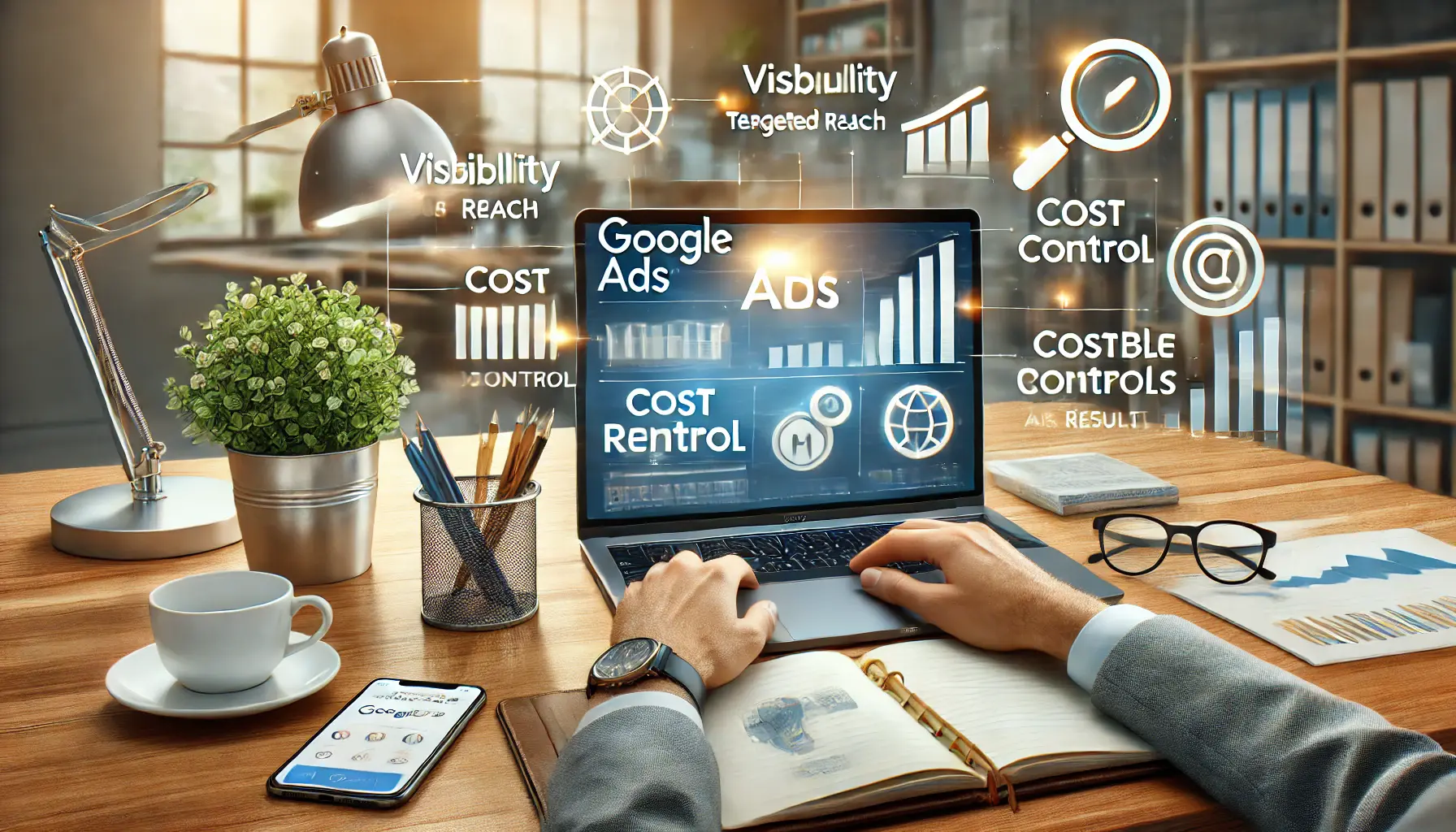
A marketing professional analyzing the benefits of Google Ads for advertising success.
Key Benefits of Using Google Ads for Advertising
- Instant visibility: Appear at the top of search results immediately after launching your campaign.
- Targeted reach: Connect with specific audiences based on their interests and search intent.
- Cost control: Set a budget that suits your business needs, with no minimum spend requirement.
- Measurable results: Track every click and conversion to assess the effectiveness of your ads.
- Flexibility: Adjust campaigns in real-time to optimize performance and adapt to changing market trends.
By understanding the basics of Google Ads and its significant role in digital marketing, you can lay the groundwork for a successful advertising strategy.
In the following section, we’ll guide you step by step on how to set up your first Google Ads campaign.
Google Ads operates on a pay-per-click model, allowing advertisers to target audiences effectively while only paying for actual clicks. This ensures cost efficiency and targeted reach.
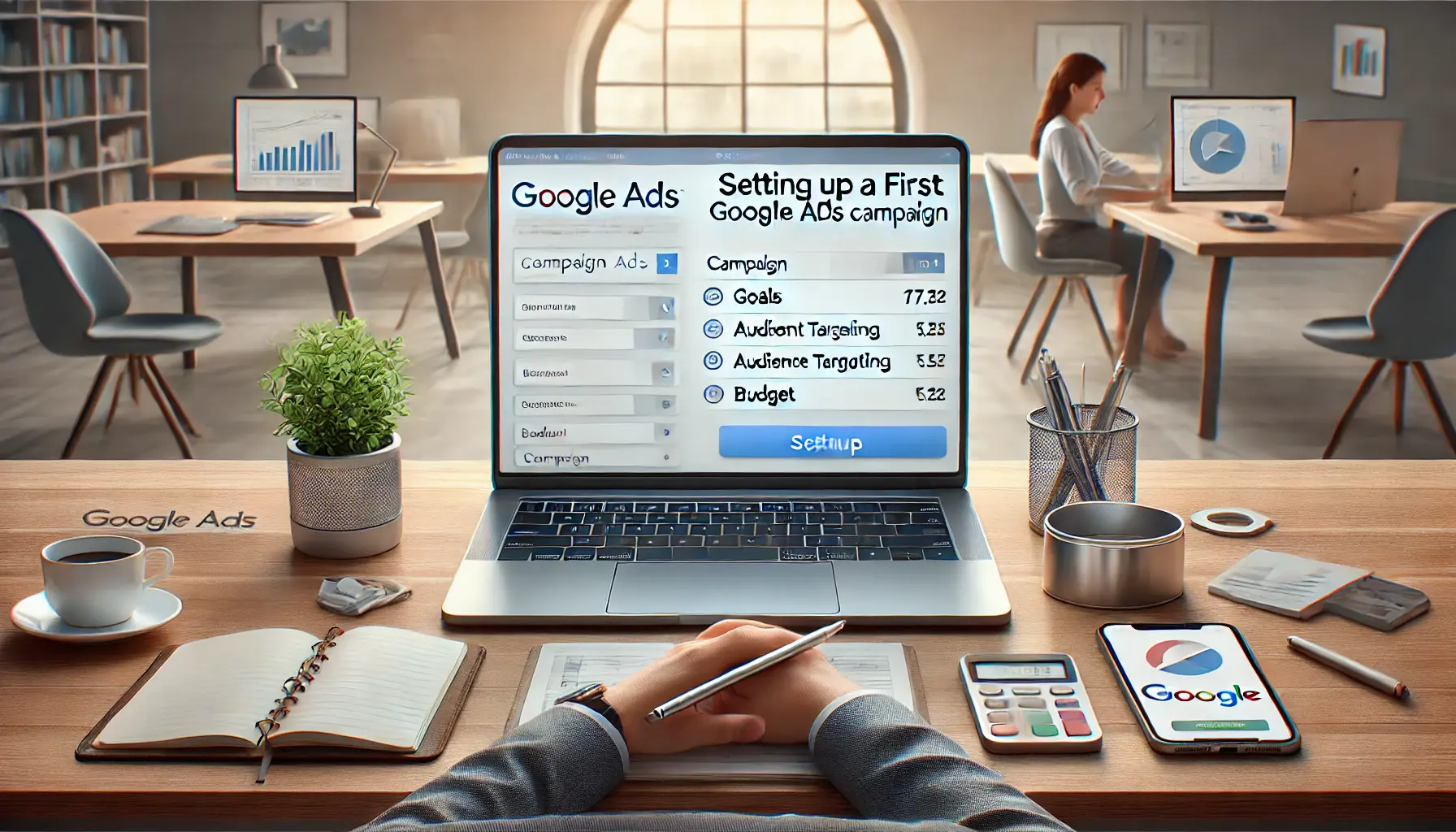
A digital marketer setting up their first Google Ads campaign, highlighting the process of defining goals and targeting the right audience.
Setting Up Your First Google Ads Campaign
Embarking on your first Google Ads campaign is an exciting step toward enhancing your business’s online visibility.
Let’s walk through the process together, ensuring you have a clear understanding of each stage.
First, you’ll need to create a Google Ads account.
Visit the Google Ads homepage and click ‘Start Now.’ If you don’t have a Google account, you’ll need to create one.
Once logged in, Google will guide you through a few onboarding steps where you’ll need to provide your business name and website URL.
Next, define your campaign goals.
What are you looking to accomplish with your ad?
Whether it’s driving sales, generating leads, or increasing website traffic, having clear objectives will shape your campaign strategy.
Choosing the right campaign type is very important.
Google Ads offers several types, such as Search, Display, Video, Shopping, and App campaigns.
For beginners, a Search campaign is often recommended.
This type of campaign allows your ads to appear on Google search results when users search for relevant keywords.
Now, let’s talk about budgeting.
Set your daily budget—the amount you are willing to spend each day.
Start with a modest budget, which you can adjust after monitoring your campaign’s performance.
Remember, Google Ads operates on a pay-per-click model, meaning you only pay for each click your ad receives.
Targeting the right audience is essential.
Choose the locations where you want your ads to be shown, pick the languages spoken by your prospects, and decide on unique demographics applicable to your business.

A marketing professional working on Google Ads, developing ad groups and selecting keywords to optimize the campaign.
Developing Ad Groups and Choosing Keywords
Once everything is set up, it’s time to develop ad groups and choose keywords.
Organize your products or services into themes, then select keywords for each ad group that customers might use when searching for what you offer.
Tools like Google’s Keyword Planner can assist with this process.
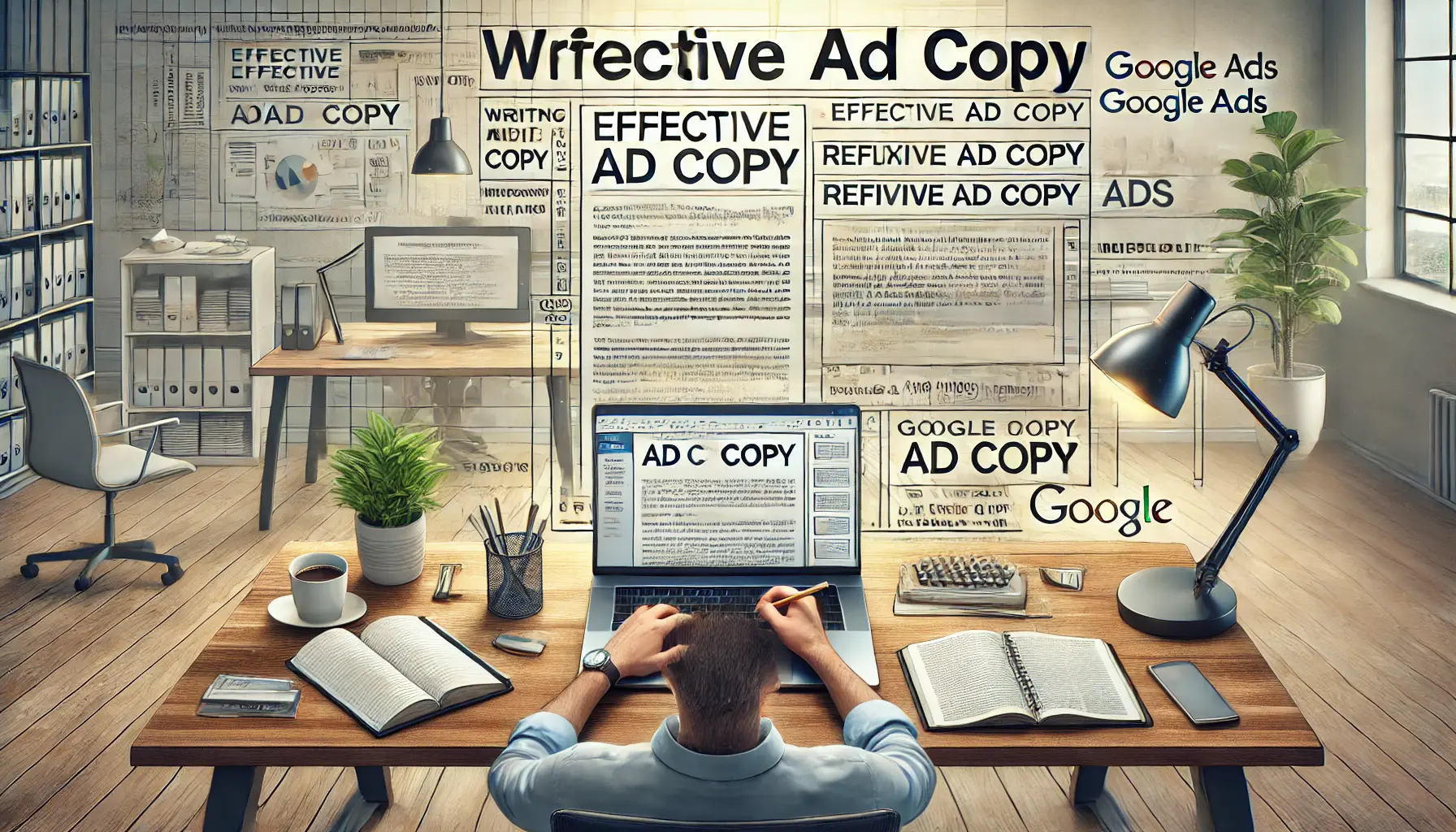
A focused professional crafting compelling ad copy for a Google Ads campaign, emphasizing creativity and precision in digital marketing.
Writing Effective Ad Copy
Writing ad copy is extremely important.
Ads should be clear and provide a compelling reason for people to buy your product or service.
Include an effective call-to-action to encourage users to click on your ad.
Ensure that your ad copy aligns with the keywords in your ad group and the content on your landing page.
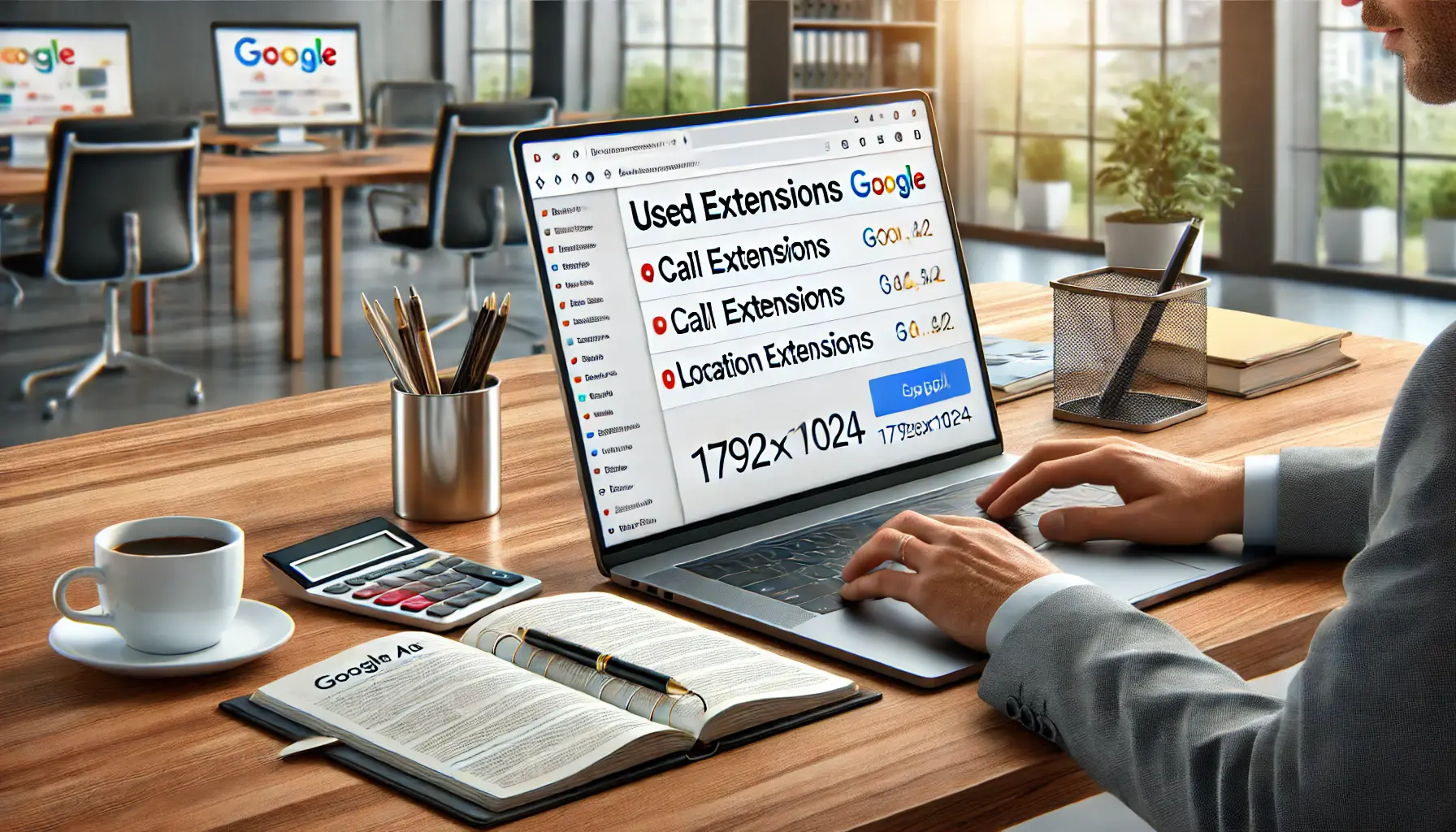
A marketing professional utilizing ad extensions in Google Ads to enhance visibility and engagement in a modern office environment.
Using Ad Extensions
Don’t forget about ad extensionsAdditional information that can be added to ads, such as phone numbers or links to specific pages..
These are additional pieces of information you can add to your ads, such as your business address, phone number, or links to specific pages on your website.
Ad extensions can increase the visibility of your ad and give users more reasons to interact with your business.
A data-driven digital marketer setting up conversion tracking to measure the success of a Google Ads campaign.
Setting Up Conversion Tracking
Before launching your campaign, set up conversion tracking.
This feature allows you to track the actions users take after clicking on your ad, such as making a purchase or signing up for a newsletter.
Conversion tracking provides valuable insights into your campaign’s performance and helps you make informed decisions for future optimizations.
Once everything is set, review your campaign settings, verify that all information is accurate, and launch your campaign.
Monitor its performance closely and be prepared to make adjustments as needed to meet your advertising goals.
Setting up a Google Ads campaign is a dynamic process.
Stay curious, keep learning, and don’t be afraid to experiment with various strategies to find what works best for your business.
Start small and gradually increase your budget once you gather performance data. Clear goals and proper audience targeting lay the foundation for a successful campaign.

A digital marketer refining ad copy for a Google Ads campaign, focusing on creativity and precision for maximum impact.
Crafting Effective Ads for Maximum Impact
Creating compelling advertisements is crucial to the success of your Google Ads campaigns.
Let’s explore how you can craft ads that not only attract attention but also drive meaningful engagement.

A digital marketer writing engaging ad copy in a creative and focused work environment, crafting impactful advertisements.
Writing Engaging Ad Copy
Your ad copy should be clear, concise, and focused on the benefits your product or service offers.
Highlight what sets you apart from competitors and include a strong call-to-action to encourage users to click on your ad.
Remember, your ad copy should align with the keywords in your ad group and the content on your landing page.
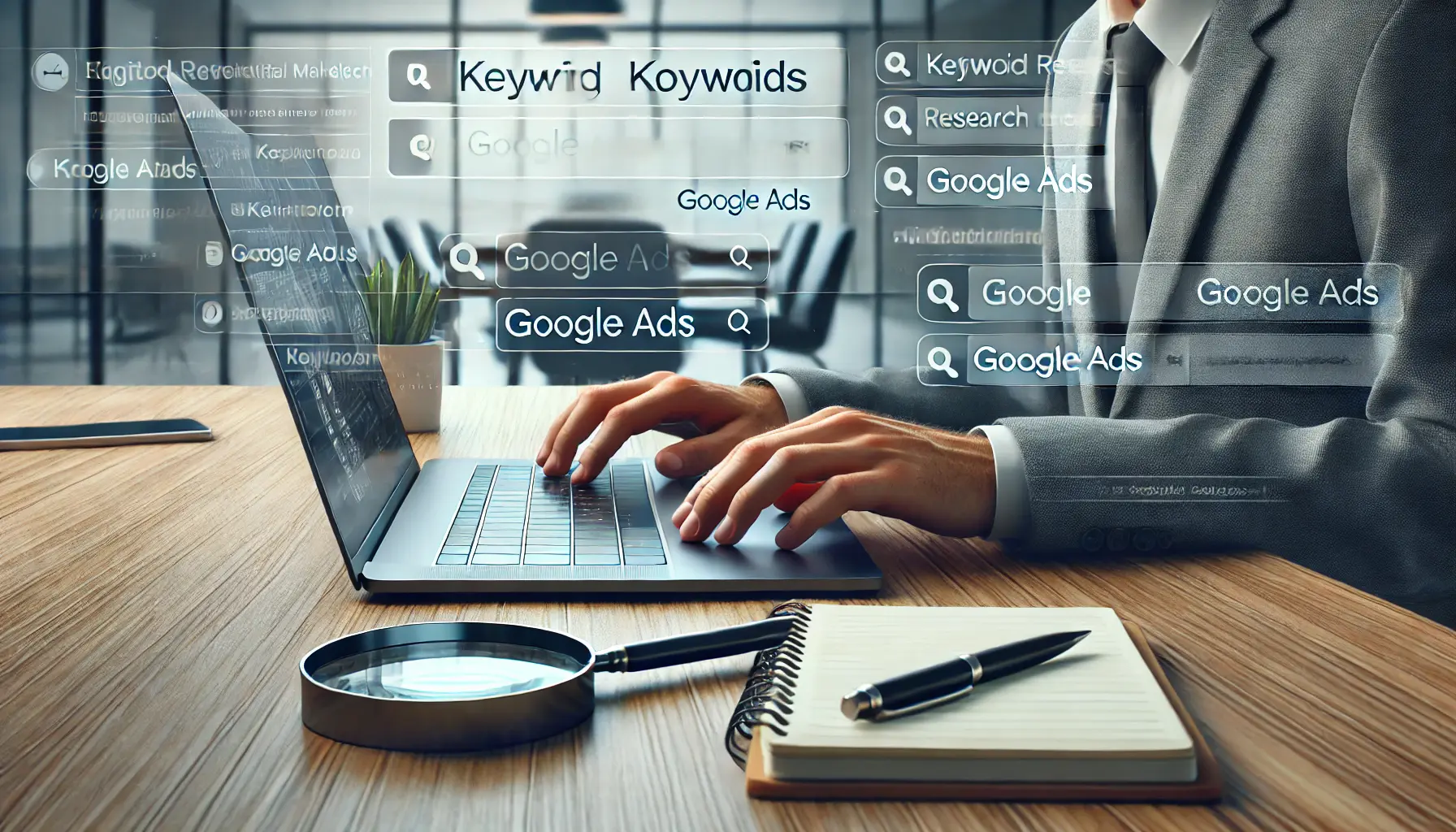
A digital marketer focused on selecting the right keywords for a Google Ads campaign, emphasizing precision and strategy.
Selecting the Right Keywords for Your Campaign
Choosing appropriate keywords is essential for reaching your target audience.
Utilize tools like Google’s Keyword Planner to identify relevant keywords with substantial search volume.
Consider incorporating long-tail keywordsSpecific and less competitive keywords that often have lower search volumes but higher conversion rates., as they often have less competition and can attract more qualified leads.

A digital marketer optimizing ad visibility by using ad extensions in Google Ads, focusing on call and location extensions for better reach.
Using Ad Extensions to Enhance Visibility
Ad extensions provide additional information and can make your ads more appealing.
Here are some common types of ad extensions:
- Sitelink Extensions: Direct users to specific pages on your website.
- Call Extensions: Display your business phone number, allowing mobile users to call directly.
- Location Extensions: Show your business address, encouraging local visits.
- Callout Extensions: Highlight unique offers or features of your business.
Implementing these extensions can improve your ad’s visibility and click-through rate.

A digital marketer optimizing a landing page design to improve conversions, focusing on user engagement and effective layout.
Optimizing Landing Pages for Conversions
Your landing page should provide a seamless experience that matches the promise of your ad.
Ensure it is user-friendly, loads quickly, and contains a clear call-to-action.
A well-optimized landing page can significantly increase your conversion rates.

A digital designer focused on crafting high-quality ad designs with vibrant images and creative elements, emphasizing the importance of visuals in ad campaigns.
Tips for Creating High-Quality Ad Designs
While text is vital, visual elements also play a crucial role, especially in Display and Video campaigns.
Use high-quality images or videos that resonate with your target audience.
Be consistent with your brand identity, and make sure visuals relate to your ad copy.
By paying attention to these elements, you will be well on your way to constructing ads that catch people’s attention and drive results.
Next, we’ll cover how to analyze and optimize your Google Ads performance to sustain further improvement.
Ad extensions and visually engaging ad designs are crucial for enhancing ad visibility and click-through rates. A/B testing ensures continuous optimization for better results.

A digital marketer focused on analyzing and optimizing Google Ads performance metrics to improve ad campaign results.
Analyzing and Optimizing Your Google Ads Performance
Once your Google Ads campaign is up and running, it’s essential to monitor its performance and make data-driven adjustments to maximize your return on investment.
Let’s delve into the key steps for analyzing and optimizing your campaign effectively.
A digital marketer focused on setting up conversion tracking to measure campaign success in Google Ads.
Setting Up Conversion Tracking
Begin by ensuring that conversion tracking is properly configured in your Google Ads account.
This feature allows you to measure specific actions users take after interacting with your ads, such as purchases, sign-ups, or downloads.
Accurate conversion data is crucial for evaluating the success of your campaigns and identifying areas for improvement.

A digital marketer analyzing key performance metrics to evaluate the success of a Google Ads campaign.
Reviewing Key Performance Metrics
Regularly assess the following metrics to gauge your campaign’s effectiveness:
- Click-Through Rate (CTR): Indicates the percentage of users who clicked on your ad after seeing it. A higher CTR suggests that your ad is relevant and engaging to your target audience.
- Cost Per Click (CPC): Represents the average amount you pay for each click on your ad. Monitoring CPC helps you manage your budget and assess the cost-effectiveness of your keywords.
- Conversion Rate: Measures the percentage of clicks that result in a desired action, providing insight into the effectiveness of both your ad and landing page.
- Quality Score: Google’s assessment of the relevance and quality of your keywords, ads, and landing pages. A higher Quality Score can lead to better ad positions and lower costs.

A digital marketer reviewing segmented ad performance data to optimize Google Ads campaigns.
Analyzing Ad Performance by Segments
Break down your campaign data by various segments to gain deeper insights.
Consider analyzing performance based on the following:
- Device Type: Compare how your ads perform on desktops, tablets, and mobile devices to optimize for the best-performing platforms.
- Geographic Location: Identify regions where your ads are most effective and consider allocating more budget to high-performing areas.
- Time of Day: Determine when your target audience is most active and adjust your ad scheduling accordingly.

A digital marketer reviewing search query reports to optimize Google Ads campaigns based on performance data.
Evaluating Search Query Reports
Review the Search Terms report to see the actual queries that triggered your ads.
This analysis helps in identifying irrelevant keywords to add as negatives, as well as discovering new, high-performing keywords to incorporate into your campaigns.

A digital marketer assessing ad copy and landing page performance to optimize the effectiveness of a Google Ads campaign.
Assessing Ad Copy and Landing Page Performance
Evaluate the effectiveness of your ad copy and landing pages by conducting A/B testing.
Experiment with different headlines, descriptions, and calls-to-action to determine what resonates best with your audience.
Ensure that your landing pages are user-friendly, load quickly, and align with the promises made in your ads.

A digital marketer strategically monitoring budget and bidding metrics to optimize ad spend and campaign performance.
Monitoring Budget and Bidding Strategies
Keep a close eye on your spending to ensure it aligns with your campaign goals.
Adjust your bids based on keyword performance, and consider implementing automated bidding strategies that are optimized for conversions or target ROASA bidding strategy in Google Ads aiming to achieve a specific return on ad spend..
Through systematic analysis of these aspects of your Google Ads campaigns, you can make informed decisions to improve performance, increase conversions, and achieve your advertising objectives.
Remember, continuous monitoring and optimization are key to maintaining and enhancing your campaign’s success.
Regularly assess key metrics like CTR, CPC, and conversion rates. Use segmentation to fine-tune your approach based on performance across devices, locations, and time.
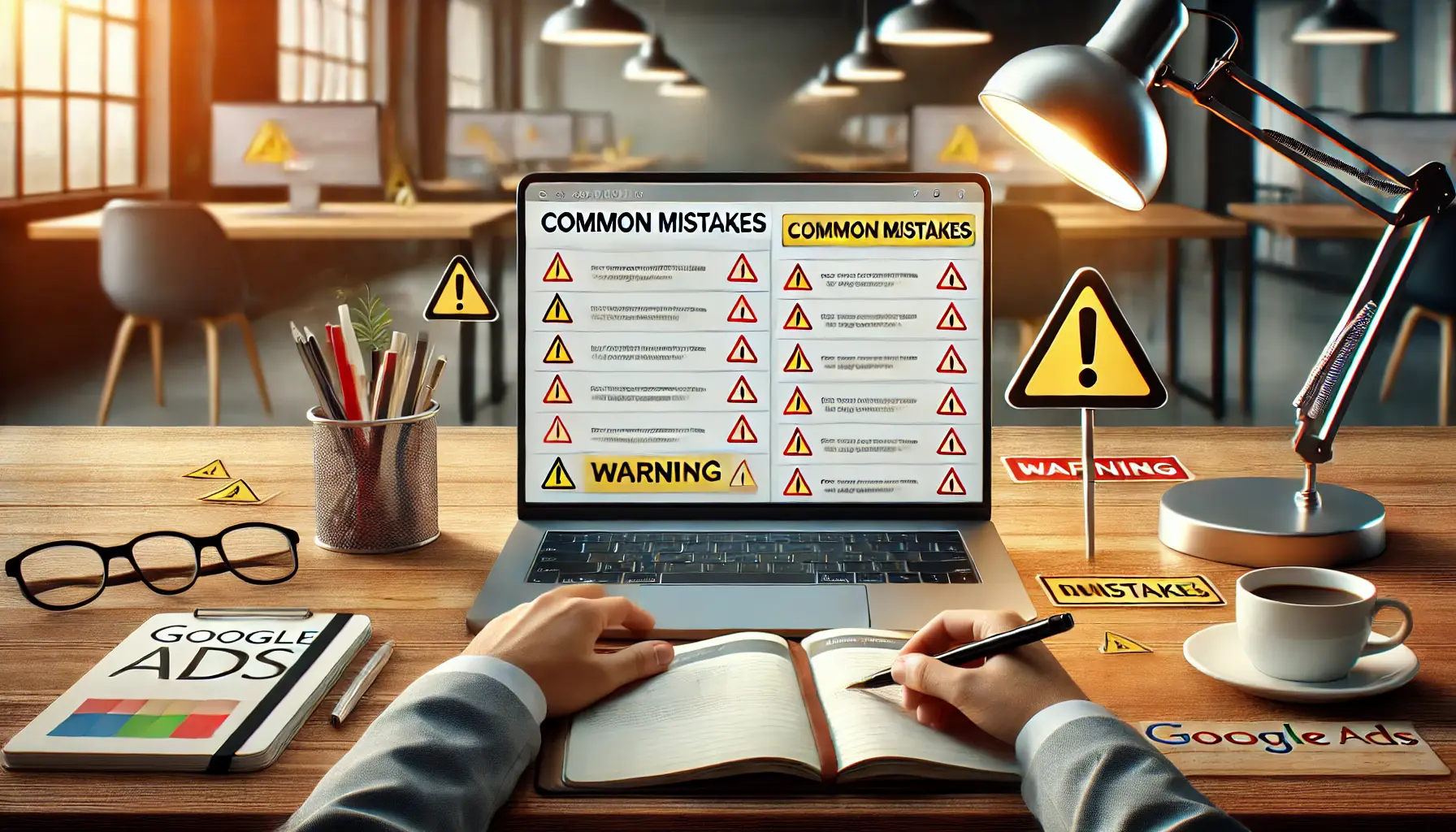
A digital marketer identifying common mistakes in a Google Ads campaign to improve performance and avoid errors.
Common Mistakes to Avoid in Google Ads Campaigns
Embarking on a Google Ads campaign can significantly boost your business’s online presence.
However, certain pitfalls can hinder your success.
Let’s explore common mistakes and how to avoid them.
A digital marketer troubleshooting inconsistent conversion tracking setup in Google Ads to ensure accurate performance measurement.
1. Inconsistent Conversion Tracking Setup
Accurate conversion tracking is vital for measuring campaign success.
Inconsistent tracking can lead to skewed data, making it challenging to assess performance.
Ensure uniform attribution methods, count types, and conversion windows across your account to maintain data consistency.

A digital marketer analyzing irrelevant search terms that triggered ads, highlighting the importance of using negative keywords in Google Ads campaigns.
2. Ignoring Negative Keywords
Failing to use negative keywordsKeywords that prevent ads from showing for certain irrelevant search queries. can result in your ads appearing for irrelevant searches, leading to wasted spend.
Regularly review your search terms to identify and exclude irrelevant keywords, ensuring your ads reach the right audience.

A digital marketer analyzing the over-reliance on broad match keywords in a Google Ads campaign, highlighting the importance of refining keyword selection.
3. Over-Reliance on Broad Match Keywords
While broad matchA keyword match type that shows ads for searches containing variations or related terms of the keyword. keywords offer extensive reach, they can also trigger your ads for unrelated queries.
This can lead to inefficient spending.
Utilize phrase and exact matchA keyword match type that triggers ads only for searches matching the exact keyword or close variations. types to maintain control over when your ads appear, and regularly monitor performance to adjust your keyword strategy accordingly.
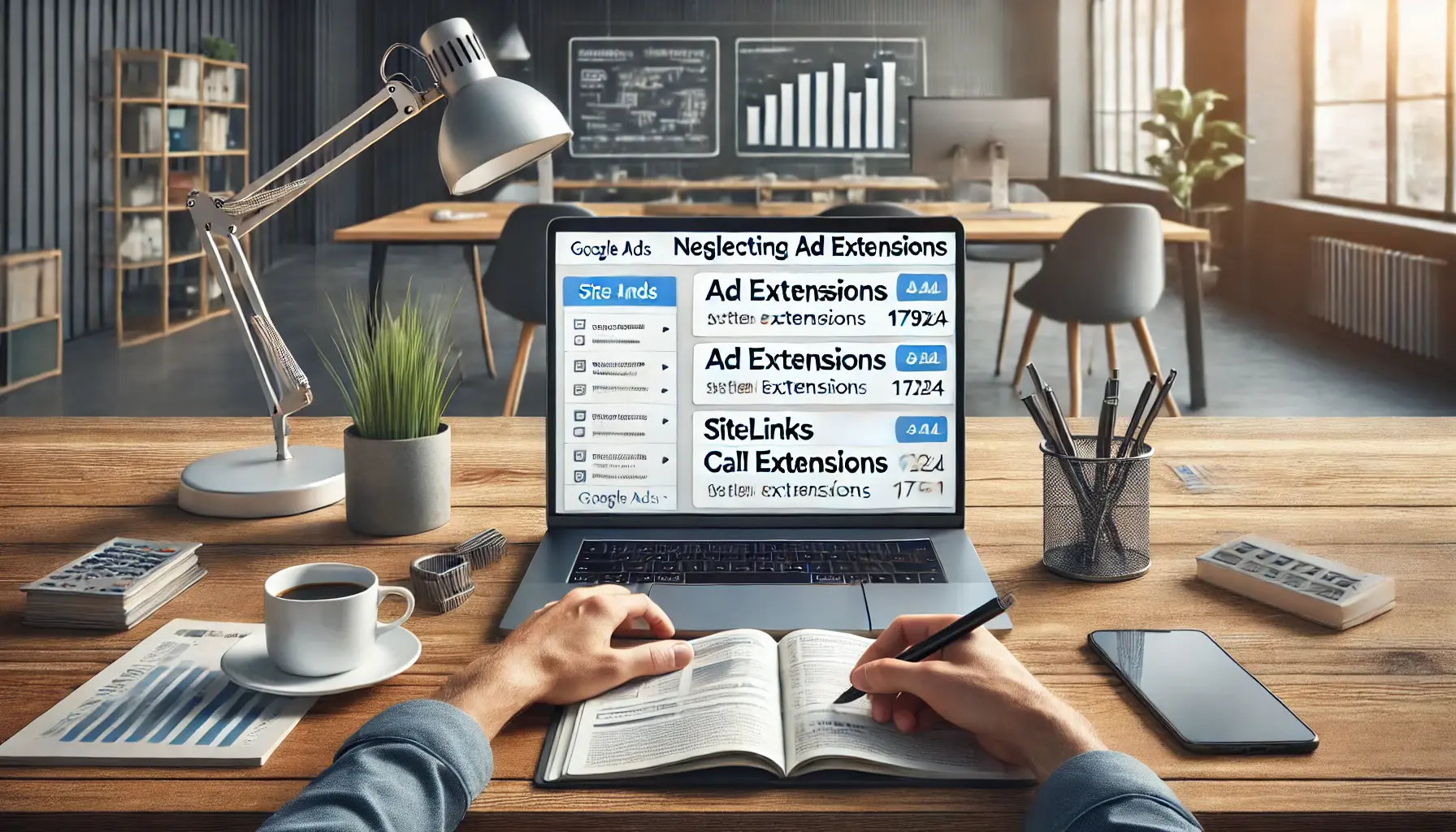
A digital marketer analyzing the impact of neglecting ad extensions in a Google Ads campaign, highlighting the importance of utilizing extensions for improved ad performance.
4. Neglecting Ad Extensions
Ad extensions enhance your ads with additional information, improving visibility and click-through rates.
Overlooking them can mean missed opportunities.
Implement relevant ad extensions, such as sitelinks, callouts, and structured snippets, to provide users with more reasons to engage with your ads.

A digital marketer analyzing the poor structure of a Google Ads campaign, highlighting the importance of a well-organized and strategic campaign setup.
5. Poor Campaign Structure
A disorganized campaign structure can lead to confusion and inefficient budget allocation.
Organize your campaigns and ad groups logically, grouping similar keywords and ads together.
This facilitates easier management and optimization.

A digital marketer analyzing an underfunded Google Ads campaign, highlighting the importance of sufficient budget allocation for effective campaign performance.
6. Underfunding Campaigns
Insufficient budgets can limit your campaign’s effectiveness.
Ensure your campaigns are adequately funded to compete in the ad auctions and achieve your marketing goals.
Regularly review and adjust your budget based on performance data.
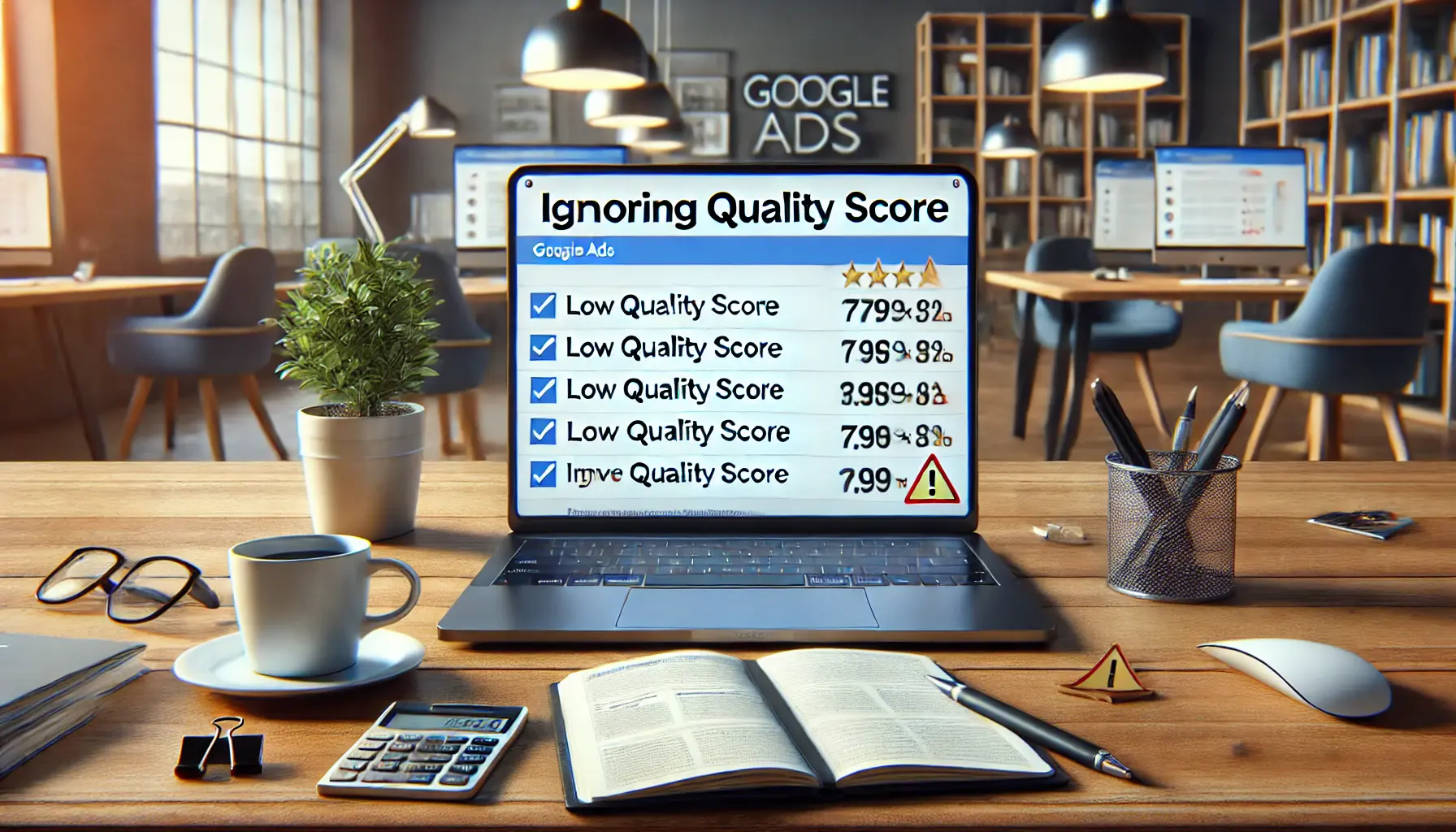
A digital marketer analyzing the low Quality Score in a Google Ads campaign, emphasizing the importance of optimizing for ad relevance and performance.
7. Ignoring Quality Score
Quality Score impacts your ad rankings and costs.
Neglecting it can lead to higher expenses and lower ad positions.
Focus on improving the relevance and quality of your keywords, ad copy, and landing pages to boost your Quality Score.

A digital marketer analyzing the impact of unclear goals in a Google Ads campaign, highlighting the need for well-defined objectives to ensure success.
8. Lack of Clear Goals
Running campaigns without clear objectives can result in wasted spend and unclear performance metrics.
Set specific, measurable objectives for campaigns—such as increasing website traffic by 20% in the next quarter, or generating 100 leads per month.
Clear objectives help dictate your strategy and track effectiveness efficiently.
By avoiding these mistakes, you’ll be well on your way to maximizing the performance of your Google Ads campaigns, leading to better results and greater value.
Avoid over-relying on broad match keywords and ensure consistent conversion tracking. Neglecting ad extensions and campaign structure can significantly hinder performance.
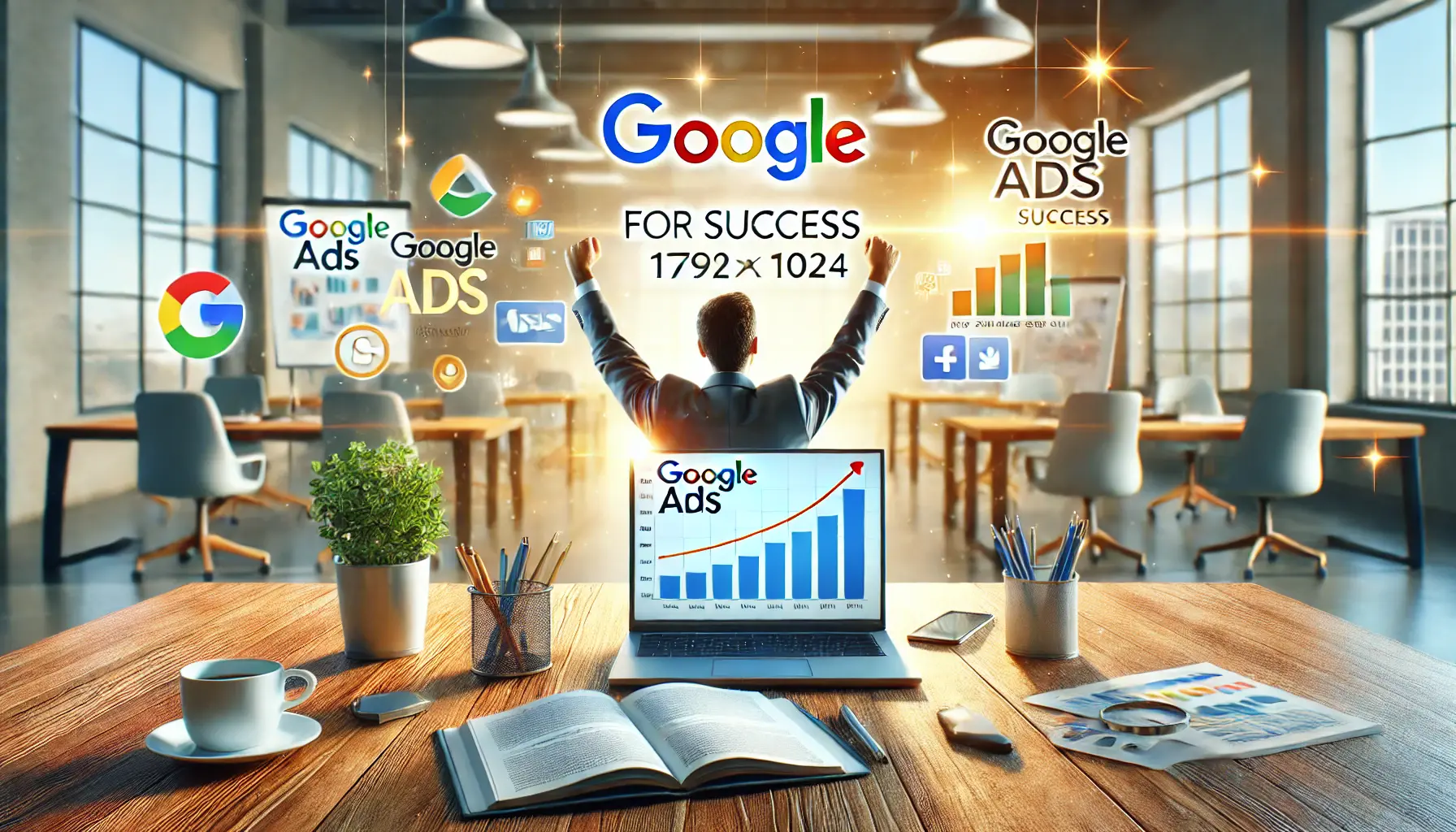
A digital marketer celebrating the successful results of mastering Google Ads, highlighting the achievement of key campaign goals.
Conclusion: Mastering Google Ads for Success
Google Ads is an indispensable tool for businesses aiming to expand their online presence and connect with their target audience effectively.
By following the strategies outlined in this article, you can set up successful campaigns, craft engaging ads, and optimize their performance to achieve your marketing goals.

A digital marketer reflecting on key strategies for Google Ads success, symbolizing actionable insights and effective campaign optimization.
Key Takeaways from the Article
To help you recap the essential steps, here are the key points discussed:
- Understanding Google Ads: Know how the platform operates and why it’s crucial for digital marketing success.
- Setting Up Campaigns: Learn to define clear objectives, choose the right campaign type, and target the appropriate audience.
- Crafting Effective Ads: Write compelling ad copy, use relevant keywords, and enhance visibility with ad extensions.
- Optimizing Campaign Performance: Regularly analyze performance metrics, track conversions, and make data-driven adjustments.
- Avoiding Common Mistakes: Steer clear of pitfalls like ignoring negative keywords, poor campaign structures, and inconsistent tracking.

A digital marketer contemplating the final thoughts and outcomes of a Google Ads campaign, reflecting on performance and strategic decisions.
Final Thoughts
Mastering Google Ads requires a combination of strategic planning, consistent monitoring, and a willingness to adapt.
Whether you’re getting started or refining past campaigns, the right approach can make all the difference in digital marketing and yield positive, measurable results.
By avoiding common mistakes in Google Ads campaigns and striving for continuous improvement, you can maximize efficiency and effectiveness.
Remember, every click is an opportunity to connect with your audience, so ensure your ads and strategies align with your business goals.
With dedication and the right approach, Google Ads can become a cornerstone of your marketing success.
Take the time to implement these best practices, and watch your online presence grow.
Continuous learning, strategic planning, and adapting to performance insights are the keys to mastering Google Ads and achieving long-term success in digital marketing.
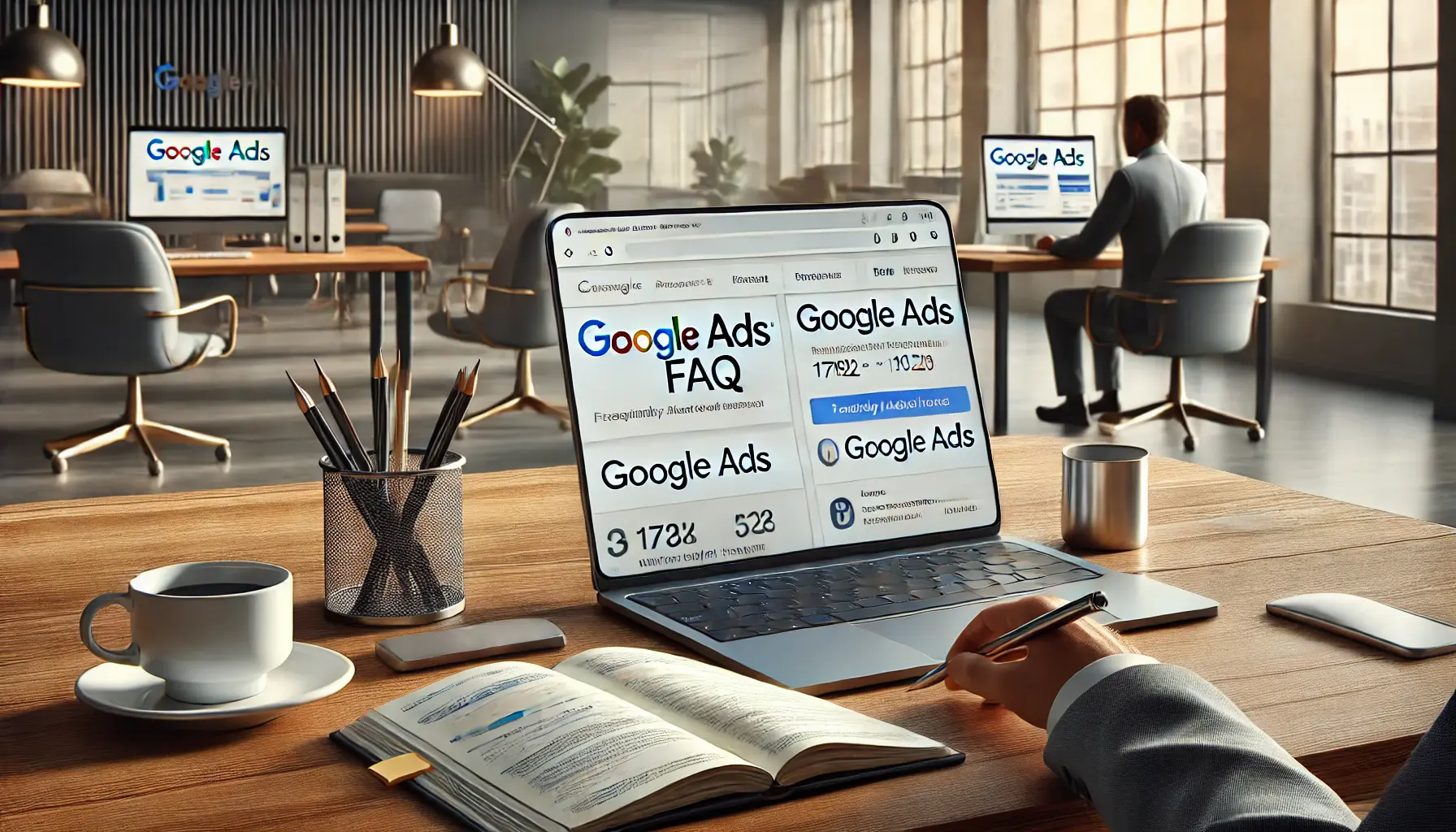
A digital marketer exploring Google Ads FAQs and key metrics in a calm and professional office environment.
Your campaigns can be managed by an agency specialized in Google Ads, check out our service page.
Google Ads FAQs
Here are some common questions and concise answers to help you understand Google Ads better.
Google Ads is an online advertising platform that enables your business to run ads on Google Search and the Google Advertising Network.
Advertisers bid on search terms, and when users search for those terms, ads may appear in search results.
Payment is typically per click.
Benefits include increased visibility, targeted advertising, measurable results, and control over your advertising budget.
Sign in to Google Ads, select your campaign goals, choose your target audience, set your budget, and create your ad content.
Keywords are words or phrases that trigger your ad to appear when users search for them, linking potential customers to your business.
Improve ad relevance, enhance landing page experience, and boost expected click-through rate to increase Quality Score.
Negative keywords prevent your ads from showing for specific search terms, helping to filter out irrelevant traffic.
Set up conversions by adding a snippet of code to your website to monitor user actions like purchases or sign-ups.
CPC charges for each click on your ad, while CPM charges per thousand ad impressions, regardless of clicks.
